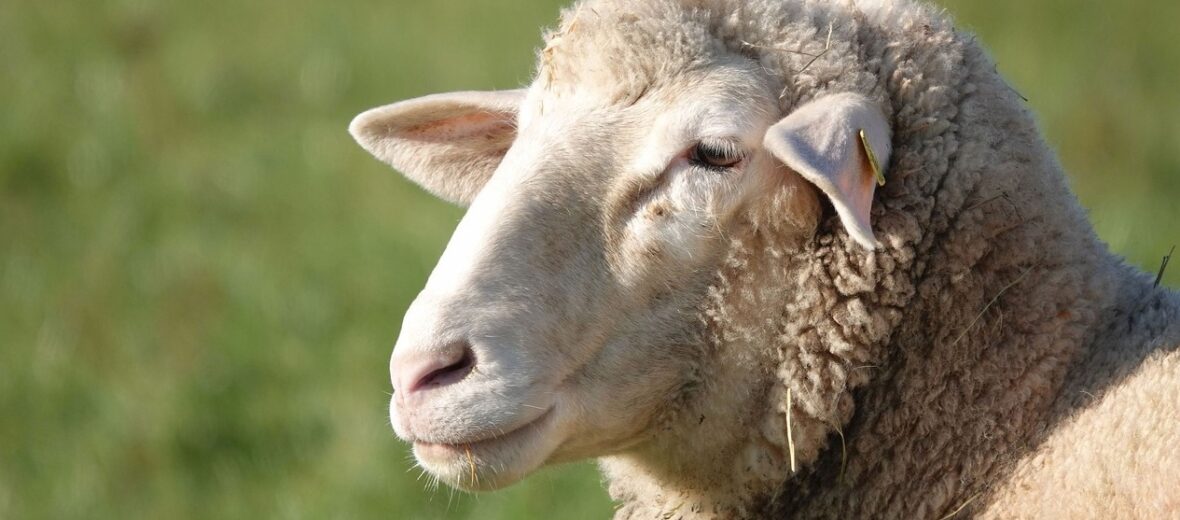
Sheep where domesticated more than 10,000 years ago and raised for their wool, milk, and meat. They can now be found on every continent, sans Antarctica, with their numbers estimated at around 1 billion strong! China has more of these animals than any place else in the world and Australia & New Zealand are the 2 largest lamb and mutton exporters in the world. These critters have more to offer than meets the eye. For instance: they are highly intelligent animals that are even capable of problem solving. These critters are thought to have a similar IQ to cattle and are nearly as smart as pigs!
First the Stats…
Scientific name: Ovis aries
Weight: Up to 350 lbs.
Length: Up to 4.3 feet
Lifespan: Up to 12 years
Now on to the Facts!
1.) There are over 40 recognized breeds of sheep in the United States and around 900 different known breeds, the world over.
2.) The oldest breed in the U.S. is the Navajo Churro.
3.) The 4 primary products derived from these critters are lamb, mutton, wool, and sheep’s milk.
4.) A group of sheep is called a flock, a herd, or a mob.
5.) They have a 300° field of vision. This allows them to see to the rear without having to turn their head. This comes in handy when looking out for predators.
But wait, there’s more on sheep!
6.) We first learned to spin wool in 3,500 B.C.
7.) Like humans, they have been known to self-medicate when sick. They have been observed eating specific plants when ill that actually cure them!
Did you know…?
Some other uses for sheep include: candles and soap (tallow is made from sheep fat), tennis racket strings (which are made of their guts), and skincare & cosmetic products (lanolin, an emollient, is found in their wool).
8.) Males are called a “ram” or a “buck”. Females are called a “ewe”. A baby is called a “lamb”. A castrated male is called a “wether” or unlucky.
9.) They are strict vegetarians that eat a variety of grasses, but will also take in certain shrubs.
10.) What is the oldest organized industry? Raising sheep.
But wait, there’s still more on sheep!
11.) New Zealand, at one time, had around 70.3 million of these critters. That equaled 22 per person!
12.) Egyptians thought that they were sacred. They even mummified them when they died. They should have added that to “The Mummy” movies.
13.) “Lambing” is the act of giving birth.
14.) Like goats, sheep lack teeth on their upper front mandible.
15.) Just like horses and goats, sheep have a 4-chambered stomach.
But wait, there’s still more on sheep!
16.) In 1996, a ewe named Dolly was the first ever mammal to be cloned from a somatic cell (any cell of the body except the sperm and egg cells).
17.) A single year’s growth of fleece yields about 8 lbs. of wool.
18.) These lovable animals are extremely friendly. They know their names, wag their tails like dogs, and they also develop powerful bonds with others in their flock, goats, and with people.
Did you know…?
Up to 10% of males seek to mate exclusively with other males.
19.) These critters also display emotions; some of which can be studied by watching the position of their ears. They also recognize and display emotion via facial expressions.
20.) Due to their excellent memory, they are able to remember individual humans and other animals for years.
But wait, there’s still even more about sheep!
21.) In Mongolia, there is a traditional hangover cure that involves eating a pickled sheep’s eye in a glass of tomato juice. OK. That’s just nasty.
22.) Their milk is great for cheese making. Some popular sheep’s milk cheese includes French Roquefort, Greek feta, sheep’s milk Ricotta, Spanish manchego, and Pecorino Romano from Italy.
23.) Predators include: coyotes, bears, foxes, dogs, big cats, and even eagles.
24.) The act of breeding sheep is called “tubing”.
25.) These hungry animals eat up to 4.5 lbs. of food a day.
Yep, there’s still more on the sheep!
26.) A single ram can service 30 – 35 ewes in a 60 day breeding season. Busy boy!
27.) Their tails are actually long. Producers will tend to dock them at birth. This is done to help prevent them from getting soaked in manure; which helps protect them from fly strike (bites from flies).
28.) Until the 18th century, exporting Merino sheep from Spain was an offense punishable by death, as their wool was highly prized.
29.) During the first World War, President Woodrow Wilson had a flock of sheep out trimming the White House lawn.
30.) If you see a sheep on its back, help it up! Sheep are incapable of righting themselves if they are placed on their back.
Now a Short Sheep Video!
Also, check out the Critter Science YouTube channel. Videos added frequently!
Want to suggest a critter for me to write about? Let me know here.




Leave a Reply